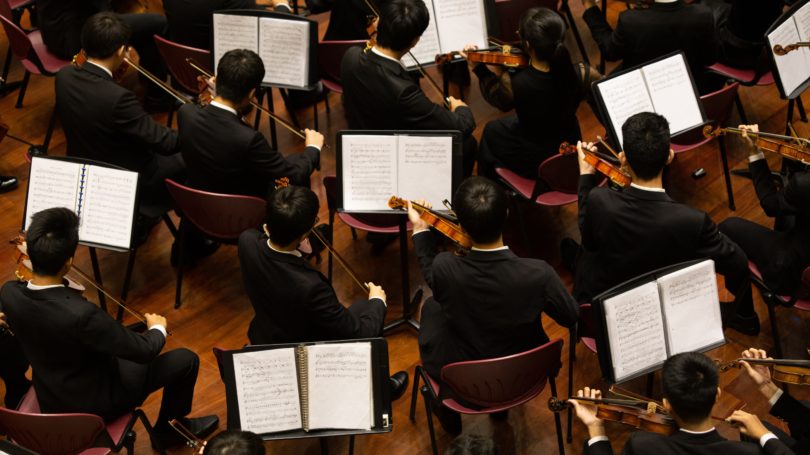Why Effective PR is like Conducting an Orchestra | Q&A with Senior VP Dave Stump

Pierpont Senior Vice President of Revenue Operations & Business Development Dave Stump explains why achieving success in PR is like conducting a symphony.
As senior vice president of revenue operations & business development at Pierpont, Dave Stump has to understand how all the various parts of PR work in concert. This understanding makes him the ideal person to explain how and why achieving success in PR is like conducting a symphony orchestra. This interview was condensed and edited for clarity. Conducted and written by Julia Covini.
First, when you think of hobbies or creative pursuits, what do you compare public relations to and why?
I compare it to classical music. There has to be a consistent, coordinated, and passionate commitment to performing well—otherwise the results won’t please the audience. And just like a classical piece, it requires many to come together as one, each playing their own part in creating a compelling end result.
What about the role of a composer being similar to that of a PR person?
They’re almost identical. The PR pro will coordinate internal, external, stakeholder, digital, social, thought leadership, and news interview messaging so that they all are in concert with each other, driving a consistent message. Just as a composer relies on all of his instruments to bring a piece to life, a talented PR team will know when to implement all of their communication tools to amplify persuasive content.
In your opinion, what does a good PR program look like? What components should it include and how should clients be viewing this important investment?
The components should go together to fit the goals. PR provides high-integrity content. Digital and social bring the content into the attention orbit of the audience. Internal communications motivate the team to passionately support outside initiatives. Speaking engagements can motivate target groups and provide proof of concept. Awards are independent confirmation of performance. Well-designed messaging brings all of the components together in a consistent way that makes sense and compels action within the audience.
Why is it important to think of creating a PR program the way a composer would think about creating a symphony?
Keeping to the symphony metaphor, the best performing PR programs build from a solid base—a plan, or composition. Then, they develop all of the parts and when to engage them so that they best build off of each other. For every organization it will be different, depending on their goals and performance requirements. But the consistent element is that wherever you end up with your plan, it should be authentic, true to the ethos of the company, and congruent with their commitments. The end result should be unique, and easy for their team to get behind.
How can PR teams inspire this type of creative conversation with clients? What questions should clients be asking of their agencies?
By bringing relevant, creative, measurable, and sustainable campaign ideas to their clients, PR teams can open the door for their clients to see a future with even higher aspirations. It’s easier to buy into this approach when you can see it tie together as a cohesive programmatic approach. Clients should be asking their agencies for realistic timelines to achieve goals and show progress. You’re setting yourself up for failure if you believe your agency can achieve these programs quickly—expect that they take time, fine-tuning, and wide organizational support to succeed. Patience pays dividends in PR programs.
With this in mind, how can PR teams help clients navigate the next six months?
By being specific, communicating clearly, and getting the plan and the buy-in from the client up front. Once everyone commits to the program, you can get true measures of performance.
Is there anything else I haven’t asked that you’d like to underscore?
Yes, and to beat the symphony example to death, the best performance comes from programs and organizations that are willing to stand out from the crowd through service, performance, or product that stands out positively in the eyes of their audience. Saying the same thing, in slightly different language, impresses no one. Being bold, and committed to that level of performance, is what creates truly memorable campaigns.
Contact Us